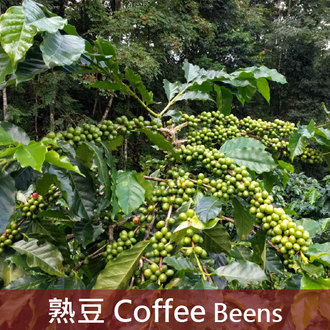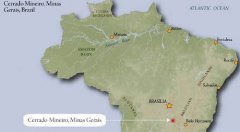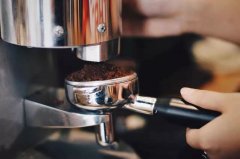The "Giant" of Coffee Industry the Historical Story of Brazilian Coffee beans introduces the characteristics of Coffee prices in Brazil

For professional baristas, please follow the coffee workshop (Wechat official account cafe_style)
Brazilian coffee is vividly compared to the "giant" and "monarch" of the coffee world. There are about 3.97 billion coffee trees there, and small farmers now grow 75% of the country's coffee. The number of coffee producers in Brazil is twice or even five times that of Colombia, the third largest coffee producer in the world. Unlike in the past, Brazil's economy is less dependent on coffee, which accounts for only 8% of GDP and 10% of GDP. Before World War II, Brazil accounted for 50% or more of the world's coffee production, now close to 30%, but the country's impact on the world coffee, especially on coffee prices, is significant. For example, two frosts in 1975 and 1994 caused a sharp rise in global coffee prices. Since the introduction of coffee trees from French Guiana in 1720, coffee production has gradually become a science. Before 1990, the Brazilian government carried out strict monitoring of the coffee industry, with both strict intervention and price protection measures, and the state has been implementing a minimum price protection policy for farmers, resulting in coffee overproduction. Before World War II, the remaining stock reached 78 million bags, which had to be burned by fire or destroyed in the water. Since the opening of the free market since 1990, the original Brazilian Coffee Authority has been replaced by the National Economic Association, the country's non-investment administrative body, which pursues a policy of non-interference and allows producers to negotiate directly with exporters. The business activities of exporters are regulated by government legislation, and the relevant departments register legitimate exporters. Because of the wide variety of Brazilian coffee, we can't just use the word "Brazilian coffee" to include it.
Just like other Arabica coffee. Brazilian coffee is called "Brazils" to distinguish it from "Milds" coffee. The vast majority of Brazilian coffee is unwashed and sun-dried and is classified according to the name of the state of origin and the port of transport. Brazil has 21 states and 17 states produce coffee, but four of them produce the most, accounting for 98% of the country's total output. They are Parana, Sao Paulo, Milas Gerais and Esp í rito Santo. The southern state of Parana has the most astonishing production, accounting for 50% of the total. Although coffee is diverse, Brazilian coffee is suitable for the taste of the public. For example, coffee produced in the northern coastal areas has a typical iodine taste, reminiscent of the sea after drinking. This coffee is exported to North America, the Middle East and Eastern Europe. Another kind of coffee that is interesting and worth pursuing is the washed Bahia coffee. This kind of coffee is not easy to find because Brazil is the world's largest consumer of coffee after the United States, and many good coffee can only be found in its domestic market. In Brazil, the second largest producer is Robusta coffee. This kind of coffee is sold in the supermarket. Robusta coffee, sold under the name Cornelon, accounts for 15 per cent of total production. The old Bourbon coffee is grown on some estates in the Serrado district of the state of Milas Gerais in southeastern Brazil. These estates, such as CappinBlanco Manor and Vesta. Allegre Manor, the old variety of coffee grown in Bourbon, is also sold on the market. Although they come from the same area, these coffees have their own characteristics. Cappinblanco coffee is smoother than Vesta Allegre coffee, while Vesta Allegre coffee is strong and black, both of which have relatively low acidity, but, like all Brazilian coffees, they are most suitable for drinking when fresh, because the older they are, the stronger the acidity. These coffee growers have organized themselves into the Brazilian Special Coffee Association. Coffee overall impression flavor there are many kinds, a variety of flavors, but most of them are low-grade coffee, smooth taste recommended low degree of roasting to deep roasting, suitable for a variety of uses good grade. Brazil is the largest producer of coffee in the world. The output is first and the quality is stable. Is an Arabica species. Adopt the method of drying treatment. The aroma and taste are moderate. There is almost no sour taste. Is the representative of neutral coffee. It can be said to be the most suitable variety for mixed coffee. Santos, especially Bourbon bour bon Santos (named after the French colonial island Bourbon bour bon. Bourbon is now known as R é union, where the coffee saplings that brought Para were planted), which is famous for its mellow, flawless and neutral taste. Santos can be cooked directly and is a good partner for Italian beans. The real bourbon Santos is the beans of the first few seasons of mocha coffee trees. Three or four years later, the characteristics of beans changed, and in the sixth year, it became Flat Bean Santos. Red Santos is sweet, Bourbon Santos is bitter, fresh Santos is sour, and Chen will weaken the sour taste. Recently, the "Guilma Cup" is also highly rated.
Important Notice :
前街咖啡 FrontStreet Coffee has moved to new addredd:
FrontStreet Coffee Address: 315,Donghua East Road,GuangZhou
Tel:020 38364473
- Prev

Analysis of the current situation of Brazilian Coffee in 2017 introduction to Saquarema Farm in South Minas, Brazil
For the exchange of professional baristas, please pay attention to the coffee workshop (Wechat official account cafe_style) Coffee was first introduced to Brazil in the early 18th century. In 1727, the Brazilian government sent a personable army officer to secretly bring coffee seeds from French Gaiana to Brazil on the grounds of mediating border disputes. It is said that the governor's wife of French Gaiana was fascinated by the officer at that time.
- Next

Coffee world map-Italian formula beans must be Brazilian coffee beans how to drink Brazilian coffee
Communication of professional baristas Please pay attention to the coffee workshop (official Wechat account cafe_style) strong cocoa flavor Italian formula bean pet planting environment, as Brazil rarely has more than 3000 feet of highlands, coupled with the lack of volcanic soil (Volcanic Soil), in fact, it is not conducive to growing coffee. The early spread depended on the red-purple soil (Terra Roxa) that had not yet been cultivated.
Related
- Detailed explanation of Jadeite planting Land in Panamanian Jadeite Manor introduction to the grading system of Jadeite competitive bidding, Red bid, Green bid and Rose Summer
- Story of Coffee planting in Brenka region of Costa Rica Stonehenge Manor anaerobic heavy honey treatment of flavor mouth
- What's on the barrel of Blue Mountain Coffee beans?
- Can American coffee also pull flowers? How to use hot American style to pull out a good-looking pattern?
- Can you make a cold extract with coffee beans? What is the right proportion for cold-extracted coffee formula?
- Indonesian PWN Gold Mandrine Coffee Origin Features Flavor How to Chong? Mandolin coffee is American.
- A brief introduction to the flavor characteristics of Brazilian yellow bourbon coffee beans
- What is the effect of different water quality on the flavor of cold-extracted coffee? What kind of water is best for brewing coffee?
- Why do you think of Rose Summer whenever you mention Panamanian coffee?
- Introduction to the characteristics of authentic blue mountain coffee bean producing areas? What is the CIB Coffee Authority in Jamaica?

